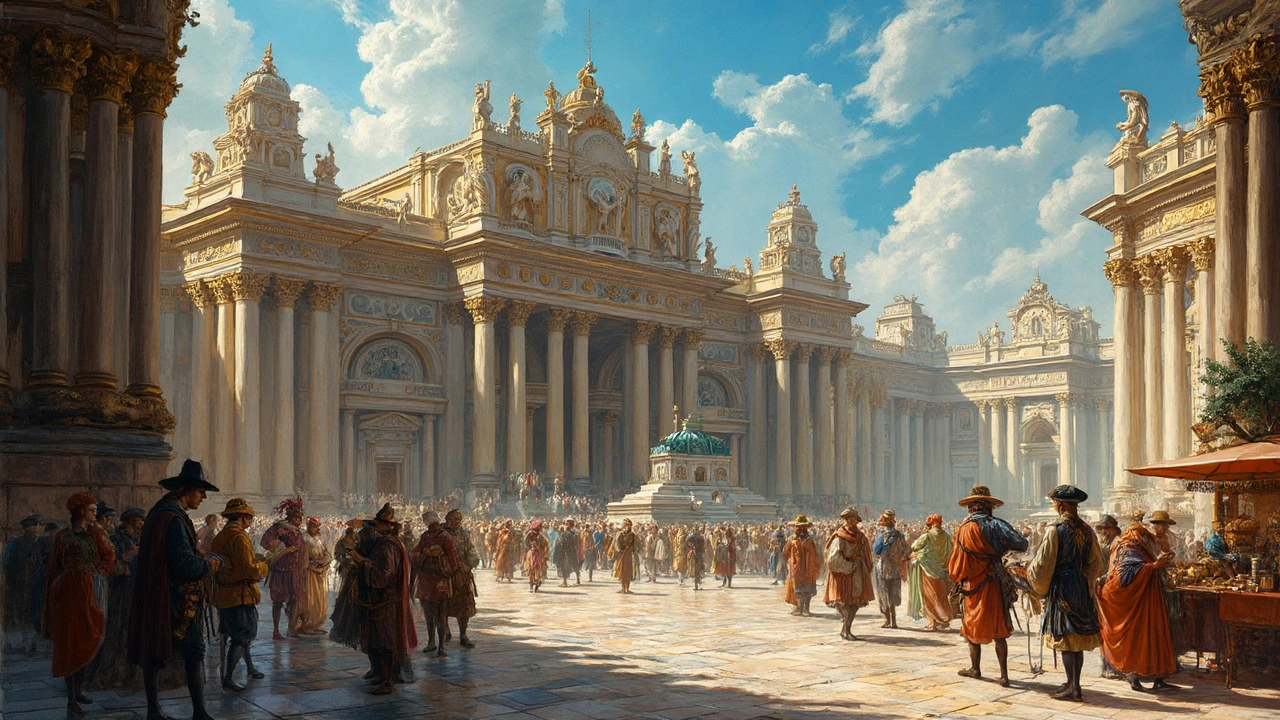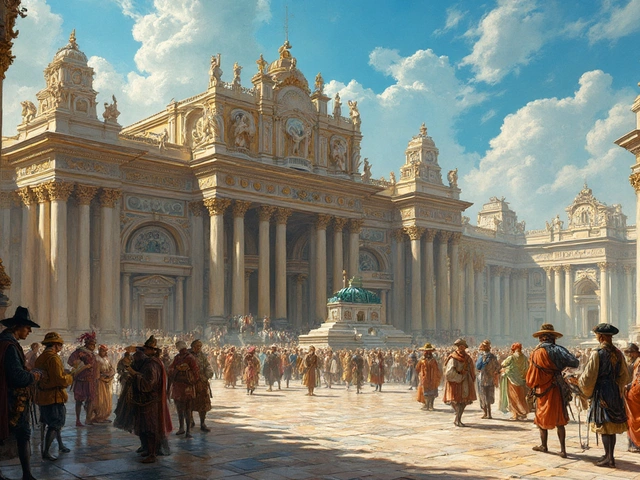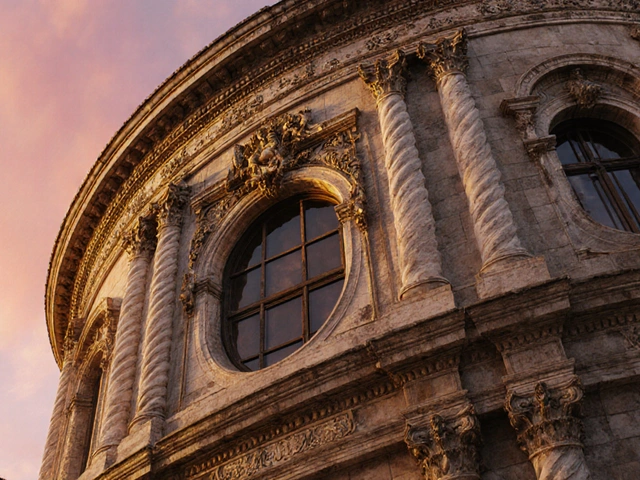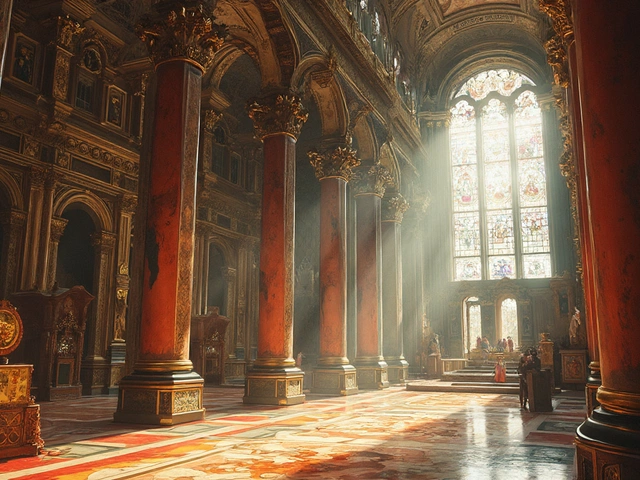Ever wondered why some buildings instantly grab your attention with their intricate details and dramatic flair? You might be looking at Baroque architecture. This style popped up during the 17th century in Italy and it’s all about impressing and inspiring. From the grand churches to the detailed palaces, it's almost like each structure wants to outdo the last with its bold curves and exquisite ornaments.
What makes Baroque architecture super interesting is its role in mirroring the cultural dynamics of its time. Imagine living in a world where every building around you wants to tell a story about power, faith, and emotion. These aren't just pretty buildings; they’re like history books made of bricks and mortar. They stand as testament to how art and architecture can reflect the tides of history.
- Origins of Baroque Architecture
- Key Features and Characteristics
- Cultural and Historical Influence
- Famous Baroque Structures
- Baroque Style in Modern Times
- Preservation of Baroque Architecture
Origins of Baroque Architecture
Alright, let's talk about where this jaw-dropping Baroque architecture style came from. We're heading back to late 16th-century Italy, when the world was buzzing with changes. The Catholic Church, wanting to spruce up its image and attract more folks, decided that grand and theatrical was the way to go. Enter the Baroque style, designed to dazzle and really connect on an emotional level.
Now, within this backdrop of religious and cultural shifts, architects started breaking the mold of the more restrained, symmetrical Renaissance style. These architects, like Carlo Maderno and Gian Lorenzo Bernini, began using bold structures with sweeping curves, columns that seemed to be exploding with energy, and a whole lot of ornate decoration. It was all about creating drama and movement.
What spurred its spread across Europe? Well, part of the reason was simply the power of the idea. Leaders across the continent wanted in on this impressive style, seeing it as a means of showing off their own power and prestige. It wasn't long before Baroque architecture reached places like France, where it blended with local tastes to create variations like the French Baroque, characterized by its unique elegance and symmetry.
Baroque wasn't just about making a statement. It was about creating spaces that envelop people in an experience, often guided by the Church or royalty's needs to make a lasting impression. So, next time you see a Baroque building, remember it's a whole lot more than an artsy structure; it's a piece of history reflecting its time's beliefs and ambitions.
Key Features and Characteristics
So, what really sets Baroque architecture apart from its more understated predecessors? It’s all in the details. Bold is the name of the game in this style. We're talking about lots of curves, grand staircases, big domes, and lavish decorations. Think of a building as a canvas for dramatic effects and artistic expression, aiming to evoke emotion and awe.
One of the standout features is the use of light. Baroque architects loved playing with light and shadow, creating contrast and depth that added drama. It's like walking into a space where light does a dance to highlight the details. Large windows, mirrors, and sometimes even hidden sources of light were placed to dazzle anyone who walked in.
Curvature is another big deal. If you notice sweeping lines and curves that seem to move even when standing still, you've hit the Baroque jackpot. This wasn't just a stylistic quirk; it was about creating dynamic, flowing spaces that felt alive. According to architecture historian Helen D. Roberts,
"Baroque architecture isn't just built, it's composed, like a piece of music."
And let's not forget ornamentation. Baroque buildings are often dressed to the nines with sculptures, frescoes, and gilded details everywhere. Art and architecture were truly intertwined, with ceilings depicting detailed biblical scenes or mythological stories, telling a whole narrative in a single room.
It's also common to find a touch of illusion in these buildings. Architects used techniques like perspective paintings to make spaces appear larger than they are. This wasn’t just about showing off; it was a clever way to make the building feel even more grand and luxurious.
To give you an idea of how these elements come together, here’s a quick glance at their features:
- Richly ornamented facades and interiors
- Use of trompe-l'œil to create illusions of depth
- Expansive use of mirrors for light reflection
- Statuary and detailed carvings woven into the architecture
It's clear why this style has left such a lasting impact in art and architecture. The next time you see a building that sweeps you off your feet with its grandeur, there's a good chance it's owing to the Baroque influence.
Cultural and Historical Influence
Oh boy, Baroque architecture isn't just about rocking cool designs; it has this amazing ability to reflect the social and political vibe of the 17th century. Think of it as the architectural equivalent of a TV drama that mirrors society. When you walk into a Baroque church or palace, you're stepping right into the heart of history.
During the Baroque period, architecture played a big part in showing off power and authority. The Catholic Church, for instance, used this dramatic style to make a bold statement during the Counter-Reformation. Churches popped up with massive domes and intricate artwork, aiming to wow people and bring them closer to faith. Not just churches though; even monarchs jumped on the style, using architecture as a way to flaunt their wealth and status. Imagine Louis XIV living it up in the Palace of Versailles, a Baroque masterpiece in its own right.
Interestingly, Baroque architecture wasn't limited to Europe. As colonization spread, so did the style. It found its way into the Americas, where you'll see its influence in colonial cities from Mexico to the Andes. These places are a testament to how powerful styles can travel vast distances and adapt to all kinds of environments.
The cultural impact can also be seen in art and music. Baroque buildings often housed elaborate paintings and hosted grand musical performances. Artists and musicians found inspiration in the grandeur around them, leading to rich and vibrant art scenes. This cross-pollination of art forms only added layers to the cultural tapestry of the time.
To put it simply, Baroque architecture did more than just look pretty. It played a key role in shaping cultural movements and influencing how people lived and believed. Whether it's in the vast halls of Versailles or the ornate churches of Italy, Baroque style tells stories that are as gripping now as they were back then.
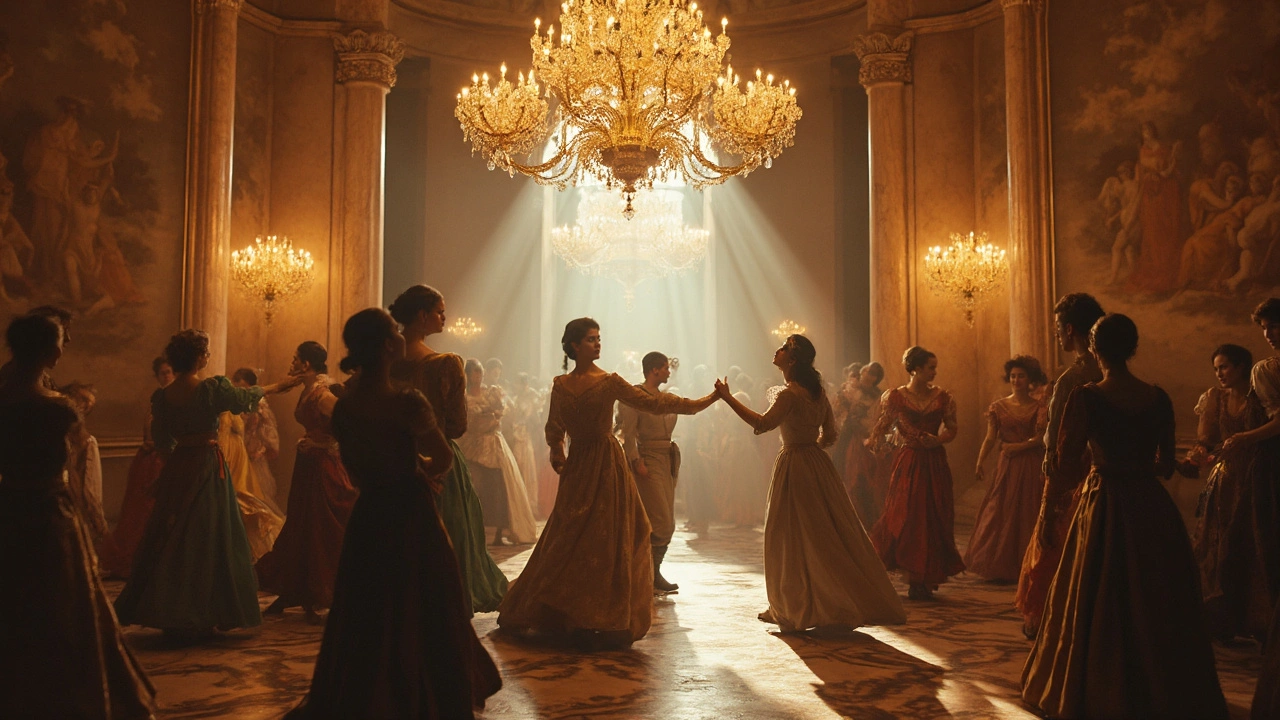
Famous Baroque Structures
Baroque architecture really shines when you check out its most famous structures. These buildings aren’t just pretty—they've got stories to tell. Each one showcases the typical boldness and drama of Baroque architecture.
First up, the St. Peter’s Basilica in Vatican City. It's a real masterpiece and might make you want to just stand there and gawk. This grand church, mainly completed by Michelangelo's architectural genius, features a massive dome that's just iconic. People from all over the world flock to see it for both its religious significance and its architectural magnificence.
Then there's the Palace of Versailles in France, and wow, talk about opulence. It wasn’t always as over-the-top. It started out as a hunting lodge but turned into one of the most extravagant palaces, thanks to Louis XIV. Every room and garden tries to top the last with gold detailing, lush decorations, and expansive gardens. It’s a vivid example of how Baroque style blends art and politics.
In Spain, you can marvel at the Royal Palace of Madrid. While it combines different styles, the Baroque elements stand out with their impressive columns, grand staircases, and detailed artwork. It’s the largest functioning royal palace in Europe, and it's been a symbol of power and prestige ever since it was built.
We can’t forget about the Frauenkirche in Dresden, Germany. This church went through quite a journey, especially after being destroyed in WWII, but it beautifully captures the curve-loving spirit of Baroque design. Its reconstruction was a giant puzzle, with original stones blended into the rebuild, making it both an architectural and cultural revival.
Finally, have a look at the Melk Abbey in Austria. Perched atop a rocky hill overlooking the Danube River, this Benedictine abbey is a stunning mix of beauty and serenity. Its ornate interiors and elaborate frescoes are prime examples of the Baroque love for drama and detail.
These structures aren't just buildings; they're snapshots of history, creativity, and human ambition. They show how Baroque architects didn’t just design with aesthetics in mind. They used their skills to immortalize the cultural essence of their era.
Baroque Style in Modern Times
Baroque architecture might have flourished centuries ago, but its influence is still kicking around today. You might not see new buildings with grand cathedrals wall-to-wall, but bits of that old-world style have crept into modern designs. Architects often borrow Baroque architecture elements like dramatic facades and intricate details to add a touch of elegance and gravity to newer constructions.
Many public spaces like theaters and concert halls embrace Baroque elements to enhance their drama and ambiance. Ever notice how some luxury hotels have opulent lobbies with rich carvings and lavish decors? That's a nod to Baroque styling. Designers love how these elements can make a space look both majestic and welcoming. It's like you're stepping into a richly painted canvas, where every corner has a story waiting to be told.
In terms of interior design, the Baroque impact shows up in various ways. Fancy moldings, bold contrasts, and even furniture can echo this grand style. People love using these elements to bring a sense of history and luxury into their homes. Some folks even go all out with modern baroque-inspired chandeliers or ornate mirrors, transforming their living rooms into a mini art show straight from the past.
And it's not just about looks. The philosophy behind Baroque, focusing on emotion and experience, fits right in with today's design storytelling. Creators aim for spaces that not only house people but truly move them, echoing the strong emotional expression of original Baroque architecture.
So next time you walk through a space and feel a touch of drama or grandeur, you might just be reliving a bit of Baroque magic brought into the modern age. It's like a little time travel, but with a practicality that fits right into our world today.
Preservation of Baroque Architecture
When it comes to keeping Baroque architecture in tip-top shape, it's not just about fixing cracks and re-painting faded details. It's a delicate balance between maintaining authenticity and adapting to today's world. You might think it’s just about slapping on a fresh coat of paint, but preserving these grand structures requires a whole team effort, involving historians, architects, and restorers.
One practical challenge is dealing with the wear and tear that comes with centuries of use. Many Baroque structures have faced everything from weather damage to changes in societal needs. The real trick is upgrading to current safety standards without losing that old-timey charm. This involves using new technologies and materials that are sympathetic to the original design.
Conservation efforts often prioritize detailed restoration work, aimed at bringing back intricate sculptures, frescos, and moldings to their former glory. And let's not forget about the ugly duckling issue—where modern surroundings clash with these historical beauties, requiring urban planners to thoughtfully integrate them into today's cityscapes.
Governments and organizations are now making a concerted effort to preserve these cultural icons. For example, UNESCO has designated several Baroque structures as World Heritage Sites, ensuring they get the global recognition and protection they deserve. Financially, this helps too— as protected status can often secure funding for much-needed repairs and upkeep.
Here's a quick peek at some stats:
| Country | Baroque Heritage Sites |
|---|---|
| Italy | 23 |
| Spain | 16 |
| Germany | 9 |
These efforts not only keep history alive but also boost local economies through tourism and education. So, next time you wander through a Baroque landmark, remember there’s a lot going on behind the scenes to keep that experience magical for generations to come.

